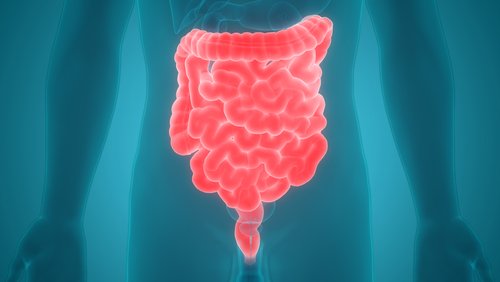Today, I will review the basics of the digestive system — everything from the mouth to the bottom.
Beginning top to bottom:
Mouth and esophagus
The first stop for eating and drinking is the mouth, and then the esophagus. Chewing and saliva break down food to start the digestion process. The esophagus pushes food down into the stomach by repeatedly contracting and releasing muscles. This process is called peristalsis.
Stomach
The stomach is where your food and drinks meet. Stomach acid, or gastric acid, further breaks down food. The stomach acts like a churn, mixing its contents and sending the mixture to your other digestive organs.
Gallbladder, liver, and pancreas
The gallbladder, liver, and pancreas each break down portions of the waste. The gallbladder, pancreas, and liver each secrete their own juices to aid in digestion. Then, they send their chemical mixtures to the duodenum.
Small intestine: Duodenum, jejunum, and ileum
Most digestion takes place in the small intestine. Bile, juices, and food are mixed together to help digestion and break down the food for absorption. The liver takes over again and reprocesses this mixture.
There are three parts of the small intestine: the duodenum, jejunum, and ileum. The duodenum takes these juices and waste, mixed with partially digested food, called chyme, to create chemical digestion. The jejunum and ileum absorb nutrients from food into the bloodstream, delivering essential nutrients to the rest of the body.
Large intestine: Ascending and descending colon
The large intestine, also referred to as the colon, is where all unused and indigestible food and fluids are processed and sent for removal. The large intestine removes a lot of fluid and salt, helping to prepare the waste for elimination.
The large intestine, like the small, has different parts: the cecum (ascending colon), transverse colon, and descending colon. There’s also the sigmoid colon, which connects the large intestine to the rectum.
Rectum and anus
The rectum and anus are the last stops in the digestive system. The rectum is the “hallway” that waste enters before exiting the body through the anus. When waste, or even air, enters the rectal chamber, alerts are sent to your brain, signaling that you need to go to the bathroom. Once your body finishes this digestive system process, it removes waste.
IBD can manifest in so many parts of the digestive system. Each area affected can be considered a different type of Crohn’s disease. For example, the majority of my inflammation and problems are within my small intestine, meaning I suffer from “small bowel Crohn’s.” In my next column, I will go over the different types of IBD.
If you ever question whether you should contact your doctor, just contact them. It is better to be safe and prepared with your doctor than to suffer alone without help.
Not everyone suffers from the same disease manifestations. Each person has a unique disease. My experiences may be different than yours, but you never can be too prepared for what could happen with Crohn’s or ulcerative colitis. For me, it could be worse.
***
Note: IBD News Today is strictly a news and information website about the disease. It does not provide medical advice, diagnosis, or treatment. This content is not intended to be a substitute for professional medical advice, diagnosis, or treatment. Always seek the advice of your physician or another qualified health provider with any questions you may have regarding a medical condition. Never disregard professional medical advice or delay in seeking it because of something you have read on this website. The opinions expressed in this column are not those of IBD News Today, or its parent company, BioNews Services, and are intended to spark discussion about issues pertaining to IBD.


